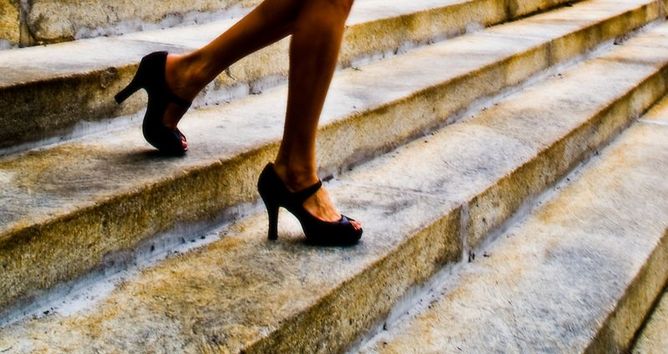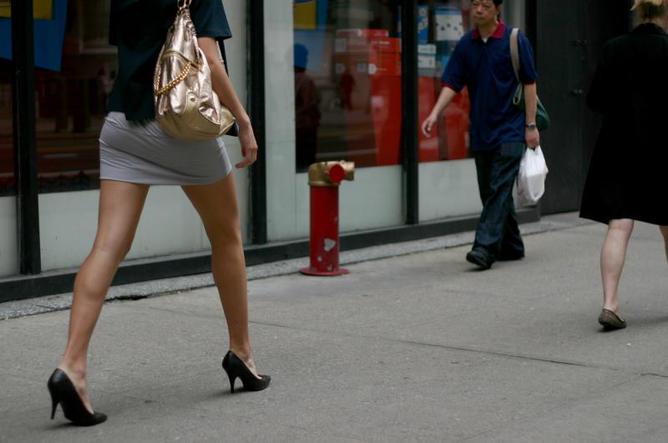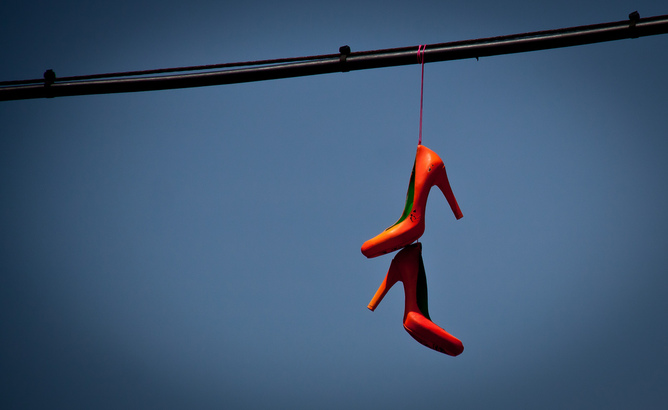
Health Check: How High Heels Harm and How to Make it Better (Op-Ed)

This article was originally published at The Conversation. The publication contributed the article to Live Science's Expert Voices: Op-Ed & Insights.
High-heeled shoes are thought to characterise femininity and beauty, making the wearer feel self-assured and elegant. But they also alter alignment of the feet, legs, and back, and can have long-term effects on posture and health.
Feet suffer considerably inside high-heeled shoes. The higher the heel, the more the foot slides inside the shoe and the greater the pressure and friction under the heel, the ball of the foot, and the big toe.
Friction is damaging to the skin causing a burning sensation and blisters and, over time, it leads to the development of hard skin and corns. This stress can also cause deeper soft tissue problems in the foot, such as a neuroma (thickened nerve).
As heel height increases, body weight shifts towards the inside border of the foot and under the big toe. Over time, this increased pressure on the big toe may cause it to be forced towards the second toe.
Damage to the big toe joint in the form of bunions (hallux valgus) has been associated with prolonged wearing of high-heeled shoes. And women who frequently wear high heels commonly have a larger forefoot area and a longer big toe.
Balance and posture
High-heeled shoes are less stable than flat shoes, and they make the whole body more unstable because they raise the height of the body’s centre of mass. They make it more difficult to maintain a symmetrical posture, and this may affect balance.
Sign up for the Live Science daily newsletter now
Get the world’s most fascinating discoveries delivered straight to your inbox.
In order to stand upright and walk in high-heeled shoes, the ankle joint must be extended and this is the joint’s least stable position.
Wearing high heels regularly (at least three days a week) changes the normal movement of the ankle joint. The upwards and outwards movement of the foot at the ankle joint becomes restricted because the calf muscle becomes shorter and the Achilles tendon becomes broader and stiffer.

And as the stabilising muscles on the outside of the lower leg have to work harder to balance the unstable ankle, they become fatigued and the risk of ankle sprains increases.
One appeal of high-heeled shoes is that they shorten the calf muscle to make an attractive leg shape, but these changes to muscle, tendons, and joints cause discomfort when high-heel wearers try to walk in flat shoes.
Increased stress on muscles and joints
Every step we take sends a shock wave up through the feet and legs to the spine, and walking on the hard, narrow heel of a high-heeled shoe increases this force.
The unnatural position of the foot in high heels means it’s less able to act as a shock absorber and the knees have to bend more to absorb the increased force. This increased stress on the knees, and overloading of the knee joints, increases the risk of joint degeneration and arthritis.
And the increased force through the body means the lower back muscles have to work harder to protect the spine, keep it upright, and maintain balance.
High-heeled shoes tip the body forwards and interfere with normal coordination of muscles that stabilise the lower spine (abdominal muscles, erector spinae, and gluteus maximus). This change in the pattern of muscle activation can lead to muscle overuse and repetitive strain injuries.
In younger women, high heels tilt the pelvis forwards and this increases curvature of the lower spine (lumbar lordosis). Excessive curvature (hyperlordosis) may cause long-term lower back problems.
In middle-aged and older women, the lower back is less mobile and high heels tend to make the spine flatten.
As the normal curves of the spine are altered by high-heeled shoes and the body is bent forward, more energy and muscle activity is required to maintain balance. This additional strain on the back can lead to overload of the spine; a survey of 200 young women found that 58% of those who wore high heels regularly experienced low back pain while wearing these shoes.

Muscles higher up the spine in the neck, are also affected by high-heeled shoes. The higher the heel, the more these small neck muscles are activated and this can lead to muscle fatigue, cervical spine problems, and pain.
Mitigating harm
Women who love high-heeled shoes are unlikely to stop wearing them, even if they become aware of the problems they may cause.
So here are some suggestions to reduce the harmful effects of high heels:
- choose a shoe with moderate heel height, no higher than five centimetres, and a fastening over the instep;
- wear high heels for short periods of time, and take a pair of flat shoes or runners to change into if you have to walk a long distance during the day;
- choose a shoe with a wide heel base, or a wedge heel, to reduce the load under the front of your foot;
- avoid running in high-heeled shoes as pressure under the foot increases considerably when running, even at low speed;
- use a shoe insert to reduce pressure on the forefoot and heel; and
- do calf muscle stretching exercises every day to maintain ankle flexibility.
Caroline Robinson does not work for, consult to, own shares in or receive funding from any company or organisation that would benefit from this article, and has no relevant affiliations.
This article was originally published on The Conversation. Read the original article. The views expressed are those of the author and do not necessarily reflect the views of the publisher. This version of the article was originally published on Live Science.









